This picture was made in 1882. It shows Venus during the transit of 1882. The big white circle is the Sun. Venus is the black dot on the Sun. Venus is near the top of the Sun.
Click on image for full size
Image courtesy the U.S. Naval Observatory Library.
History of Venus Transits
Sometimes the planet Venus goes between Earth and the Sun. From Earth it looks
like a black dot moves across the Sun. Astronomers call this a transit
of Venus.
Transits of Venus don't happen very often. Sometimes the wait between transits is about eight years. Sometimes the wait is more than 100 years!
There will be two Venus transits pretty soon. One is very soon. It will be
on June
8, 2004. The next one will be eight years later on June
6, 2012. After that, you will have to wait a very long time before another Venus
transit. The next one won't be until the year 2117!
People have only seen five transits of Venus so far. Those transits were in
1639, 1761, 1769, 1874, and 1882.
In the past, people didn't know how far
the Sun is from Earth. We didn't know
how big the rest of our Solar
System is either. Astronomers made some measurements during Venus transits.
They used those measurements to figure out how far away the Sun is. The Sun
is about 150 million kilometers (93 million miles) from Earth. That is a very,
very long way!
You might also be interested in:
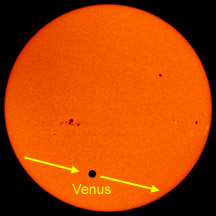
Sometimes the planet Venus gets between Earth and the Sun. When it does, we see a black dot move across the Sun. The black dot is Venus. Astronomers have a name for this. They call it a "transit"
...more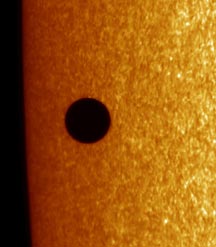
"Transit" is a special term astronomers use. A transit is like an eclipse of the Sun. When an eclipse of the Sun happens, the Moon gets between us and the Sun and blocks the sunlight. When a transit happens,
...more
Sometimes planets go in between Earth and the Sun. When that happens astronomers call it a "transit". On June 8, 2004, the planet Venus will move between Earth and the Sun. There will be a transit of Venus!
...more
The planet Mercury will cross in front of the Sun on Wednesday, November 8, 2006. When that happens, astronomers call it a transit. A transit is like a solar eclipse. An eclipse happens when the Moon passes
...more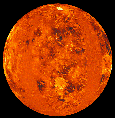
Venus is the second planet from the Sun, and is Earth's closest neighbor in the solar system. Venus is the brightest object in the sky after the Sun and the Moon, and sometimes looks like a bright star
...more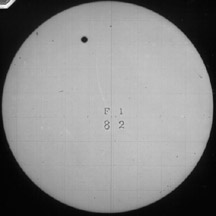
Sometimes the planet Venus goes between Earth and the Sun. From Earth it looks like a black dot moves across the Sun. Astronomers call this a transit of Venus. Transits of Venus don't happen very often.
...more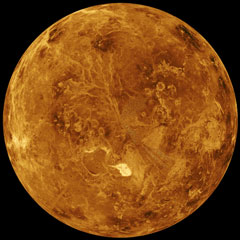
Venus is the hottest planet in our Solar System. On Earth, places near the equator are hot. Places near the poles are cold. On Venus, it is really hot everywhere... even at the North and South Poles. Venus
...more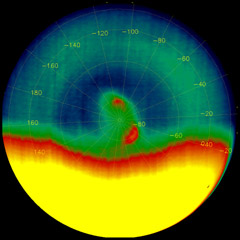
A vortex is a swirling, circular movement of air and clouds... like in a tornado or hurricane. The plural form of vortex is "vortices". The planet Venus has vortices in its atmosphere above each of its
...more












